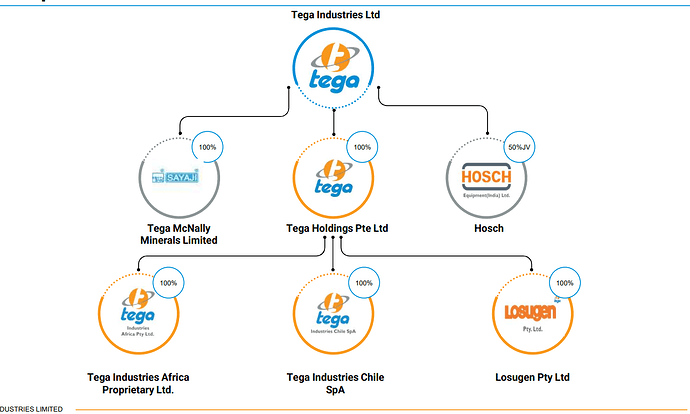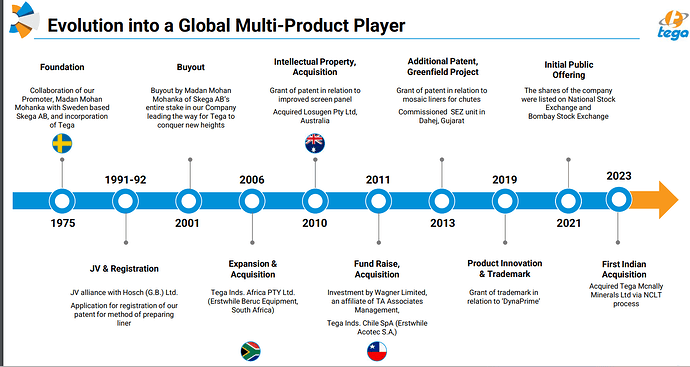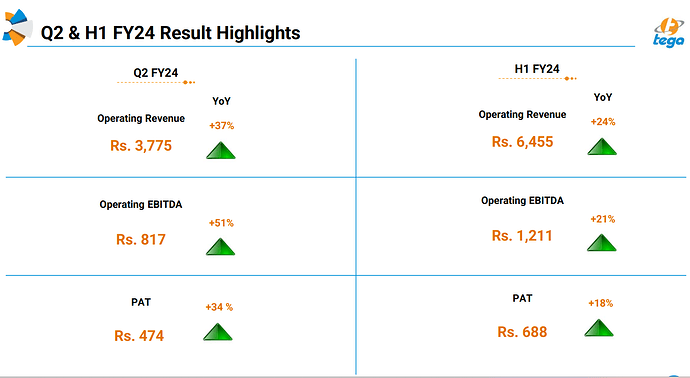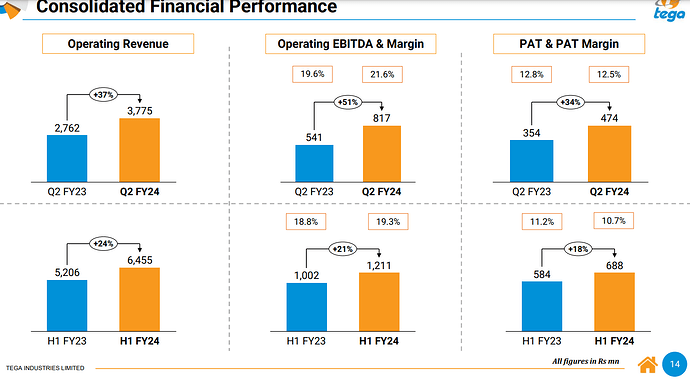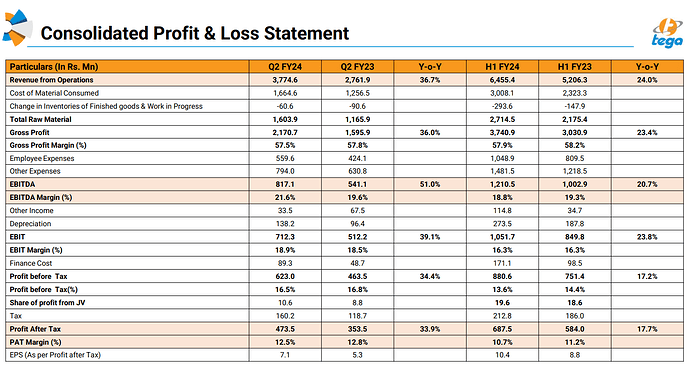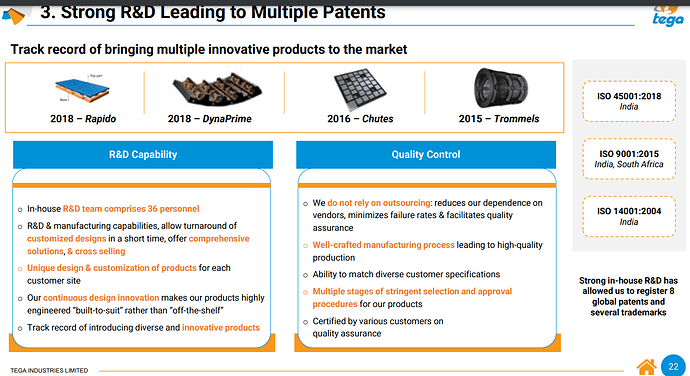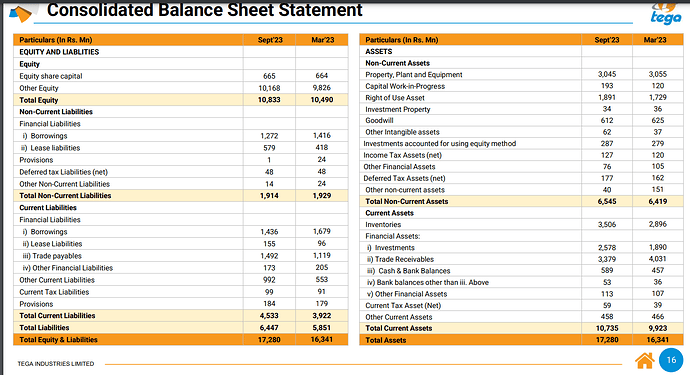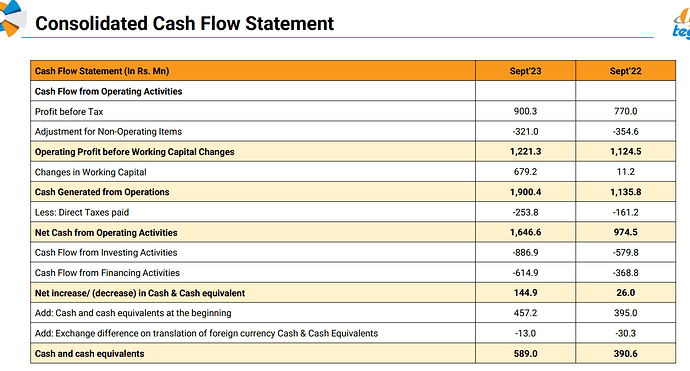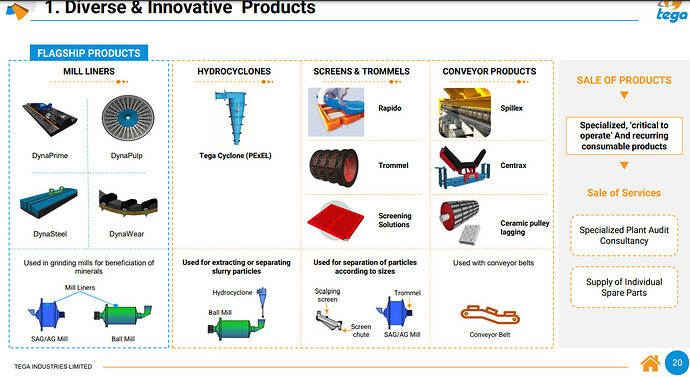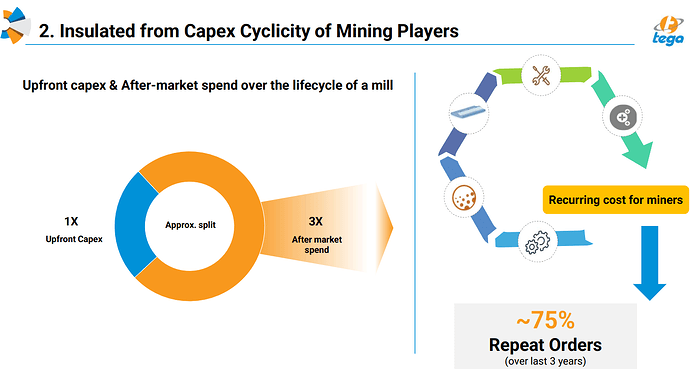I am initiating the thread about the Tega industry starting with promotor back ground.
Please share your views and comment.
Here’s an interesting story on Mr. Mohanka which every investor must read and get inspired. In the 1960s when even IIM-A was not that popular, Mr. Mohanka became one of the early graduates of the esteemed institute. Being born and brought up in a traditional Kolkata-based Madwadi joint family, immediately after his studies, he joined his family business. Before he joined the business, it was merely a material and labour supplier cum electric installation company. Mr. Mohanka, through his enterprising vigour, metamorphosed it into an engineering company. While most of his family members were happy with the status quo, Mr. Mohanka used to scan international trade journals related to mining, coal, steel, and power industries. “If any of these products appeared to have market potential in India, I would write to the manufacturers and ask for details.”- says Mr. Mohanka. This is how the seeds of Tega Industries (now a 6000 Cr market cap company) were germinated in June 1971.
Mr. Madan Mohanka. Mr. Mohanka saw an advertisement for Skega AB, Sweden in a mining journal. Skega specialized in the design, development, and manufacture of abrasion-resistant rubber products for the mining and the cement industry. He immediately started writing to the company for partnership or agency. After a few months, Skega agreed to start the partnership. But it took them 6 long years to take their partnership to a formal agreement in 1977 after a lot of back and forth with the government and Skega. And the main problems started after that. There were several of them. Let us look at the top 5 big hurdles:
-
Problems with PSU customers: If the product worked, PSU employees thought they would lose their jobs, and if it didn’t they had to take up responsibility. They chose the easy way. Didn’t do anything. We are talking about an era where except Tatas all mines were PSU-owned. They did not have the incentive to improve efficiency. For them, the best thing to do was to maintain the status quo.
-
SurveysVs Sales: Surveys showed a lot of promise for their products, but the proof of the pudding lies in the customer opening his wallet and handing out cold hard cash. Unfortunately, that did not happen for Tega.
-
Road accident of Mr. Mohanka: Midway through the project, MR. Mohanka met a serious road accident. He lost 5 months of work due to the accident. When he resumed, he saw that there was a significant over run in the cost of construction. In fact, he later realized that the initial estimate itself was faulty.
-
Dependency on one customer: There was just one avenue for the company in 1978. That was to secure a contract from Kudremukh Iron Ore Co Ltd (KIOCL) to fabricate and rubberline their indigenously procured equipment. To anyhow bag the order, Mr. Mohanka, against everyone’s suggestions, priced it too low.
-
Full-blown financial crisis: The result of the above order was a full-blown cash loss on the contract execution. So much so that in April 1979, Tega was unable to pay salaries to its employees on the due date. Mr. Mohanka’s wife gave her LIC policy and wedding jewelry to bail it out. But having survived the crisis, Mr. Mohanka reflected on the past and learned the following five lessons:
-
Margin of Safety: When you try a new product, secure investments at least 1.5 or 2 times the amount you envisage for the development. Odds are always high that you under-appreciate the time and cost overruns in the project.
-
Never Give Up: Never for a moment did Mr. Mohanka think of scrapping the project. If that had happened, there was no need to write this post.
-
Support of People: Not a single team member left Tega during the testing times. There were people from IITs and IIMs, but they all said the same thing: “Don’t worry, we are all with you.” In times of crisis, these affirmations give you hope and faith that you can bounce back.
-
Patience: Mr. Mohanka said, "We were impatient in handling people in the government. So we got frustrated. But it’s a matter of experience.”
-
Integrity: Despite all the difficulties, Tega fulfilled all its delivery commitments to the customers. That’s the hallmark of a great organization. Another very important reason for Tega to survive and thrive was the support of Mr. SS Nadkarni, then General Manager of ICICI. He believed in Mr. Mohanka and backed him all through. Not only that, he convinced other institutions like IFCI, IDBI, to subscribe to the right issue of Tega in the early eighties. Mr. Mohanka admits, “If that had not happened, then maybe I would not have seen the light of the day.” And last but by no means the least, was the unbreakable support of the Sweden company Skega during that period. They even waived royalty payments for Tega during those difficult times. So, the company that Mr. Mohanka formed was Techno Electric. And with the partnership of Swega, they joined the two words and gave it the name, TEGA.
In the period of 1990 to 1998, the steel and mining industry in India was in very bad shape. So much, so that when Tega supplied its material to the PSU customers, they paid in kind and not cash. For example, Hindustan Copper used to pay them in “tonnes of copper”. This was then sold at a discount to realize the money. So going to export was not a choice but a necessity for them. However, their agreement with Skega restricted them to work only within India. So, in 1998, when Tega ended its collaboration with Skega, it marched into the Rest of the World. However, getting export orders was not easy. Nobody could believe that an India-based company can manufacture products as good as the European & American manufacturers. At that juncture, Mr. Mohanka took a bold decision. He hired an Englishman to enter the export market. That Englishman’s salary was almost equal to the salary of all of Tega’s other employees. It was a big gamble. And this is what Mr. Mohanka thought at that moment: “There are two ways to look at it. If I don’t grow, the company will remain small and die over a period of time. And if I fight and if this man does a good job, the company will fly. So, I would rather take a risk and die than not take a risk and die.” Tega never looked back after that tough choice.The company immediately started growing its sales 50-60% every year from the small base.
Mr. Mohanka’s conviction for the business and his skin in the game can be gauged by the fact that in the year 2000 when they opened up offices and subsidiaries in the USA, Australia, and Canada, he sold off all his personal assets and landed properties to fund the expansion. Over the last 20 years, Tega has grown by leaps and bounds and did an IPO a couple of years back. That is when we started reading and tracking the business.

